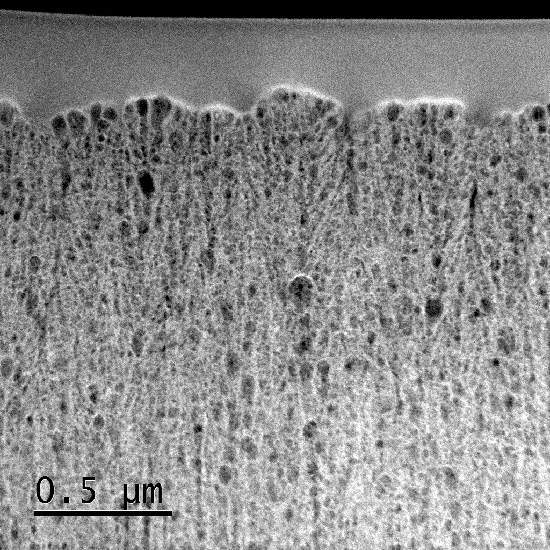Successfully Confirmed the Highly Stable Cycling Performance of Nanoporous, Amorphous Silicon Anodes for All-Solid-State Lithium Batteries
—The Confirmation is a Scientific Breakthrough that may Contribute to Dramatic Prolongation of the Cruising Distance of Electric Vehicles on a Single Charge—
National Institute for Materials Science (NIMS)
NIMS successfully revealed that nanoporous, amorphous silicon film anodes can show excellent cycling stability with extremely high lithium storage capacity. An application of the anodes can endow all-solid-state lithium batteries having high safety and reliability, with an advantage of having high energy storage densities.
Abstract
- NIMS successfully revealed that nanoporous, amorphous silicon film anodes can show excellent cycling stability with extremely high lithium storage capacity. An application of the anodes can endow all-solid-state lithium batteries having high safety and reliability, with an advantage of having high specific energy densities.
- Silicon has theoretical lithium storage gravimetrical and volumetric capacities of 4,200 mAh/g and 2,370 mAh/cm3, respectively. These capacities are, respectively, approximately 11 and 3 times larger than those of conventional graphite anode materials. Many efforts therefore have been devoted to the application of silicon anodes to lithium-ion batteries using conventional organic liquid electrolytes to prolong the cruising distance of electric vehicles. However, as the batteries are charged and discharged, silicon anodes undergo enormous volume expansion and contraction, respectively. Through the large volume changes during charge and discharge cycles, in general, silicon anodes suffer irreversible mechanical damage, which results in a rapid capacity fading. Furthermore, due to narrow electrochemical stability windows of the electrolytes and the anodes’ severe volume changes, the conventional liquid electrolytes decompose on the silicon anodes during every charge processes, which also leads to the capacity fading. Hence, a strong demand exists for research the appropriate approach to take measures against these issues without lowering the capacities of the anode materials: nanostructure design of silicon anodes and encapsulation of the anode-active materials have been extensively studied for the batteries using the liquid electrolytes.
- In this research project, we address capacity fading by combining nanoporous, amorphous silicon films with inorganic solid electrolyte. Nanoporous structure enables accommodation for volume change of silicon and thus limits the mechanical fracture and pulverization of the anode. The solid electrolyte used—unlike liquid electrolytes—does not decompose on the silicon anodes due to its wide electrochemical stability window. Experiments demonstrated that the capacity of the silicon material, which is practically high, only slightly decreased even after 100 charge and discharge cycles.
- This study demonstrates that the high-capacity silicon anode can be cycled stably in all-solid-state lithium batteries, which will lead to progress in the development of safe, reliable, high-capacity all-solid-state lithium batteries. Such batteries can be used to improve significantly not only the performance of electric vehicles but also that of stationary battery systems for storing renewable energy.
- This study was financially supported by the New Energy and Industrial Technology Development Organization (NEDO) and the Toyota Motor Corporation for a project entitled “Applied and Practical LiB Development for Automobile and Multiple Applications (P12003).”
- This study was published online in an open-access journal of the Communications Chemistry, on May 3, 2018, GMT.

Figure. Transmission electron microscopy (TEM) image of the cross-section of a nanoporous, amorphous silicon film anode. The film anode was prepared using a sputtering deposition method using a reacting gas of helium.